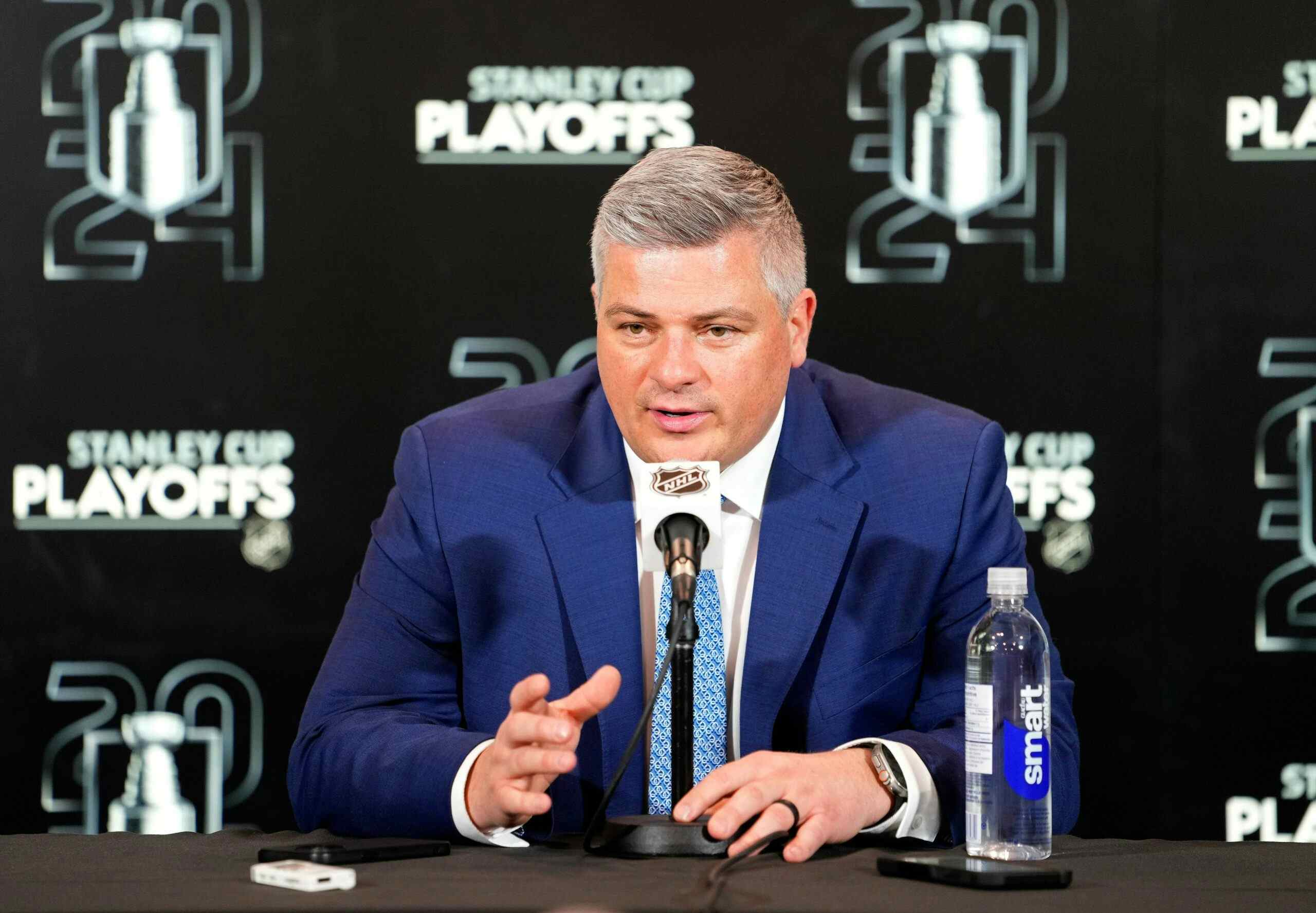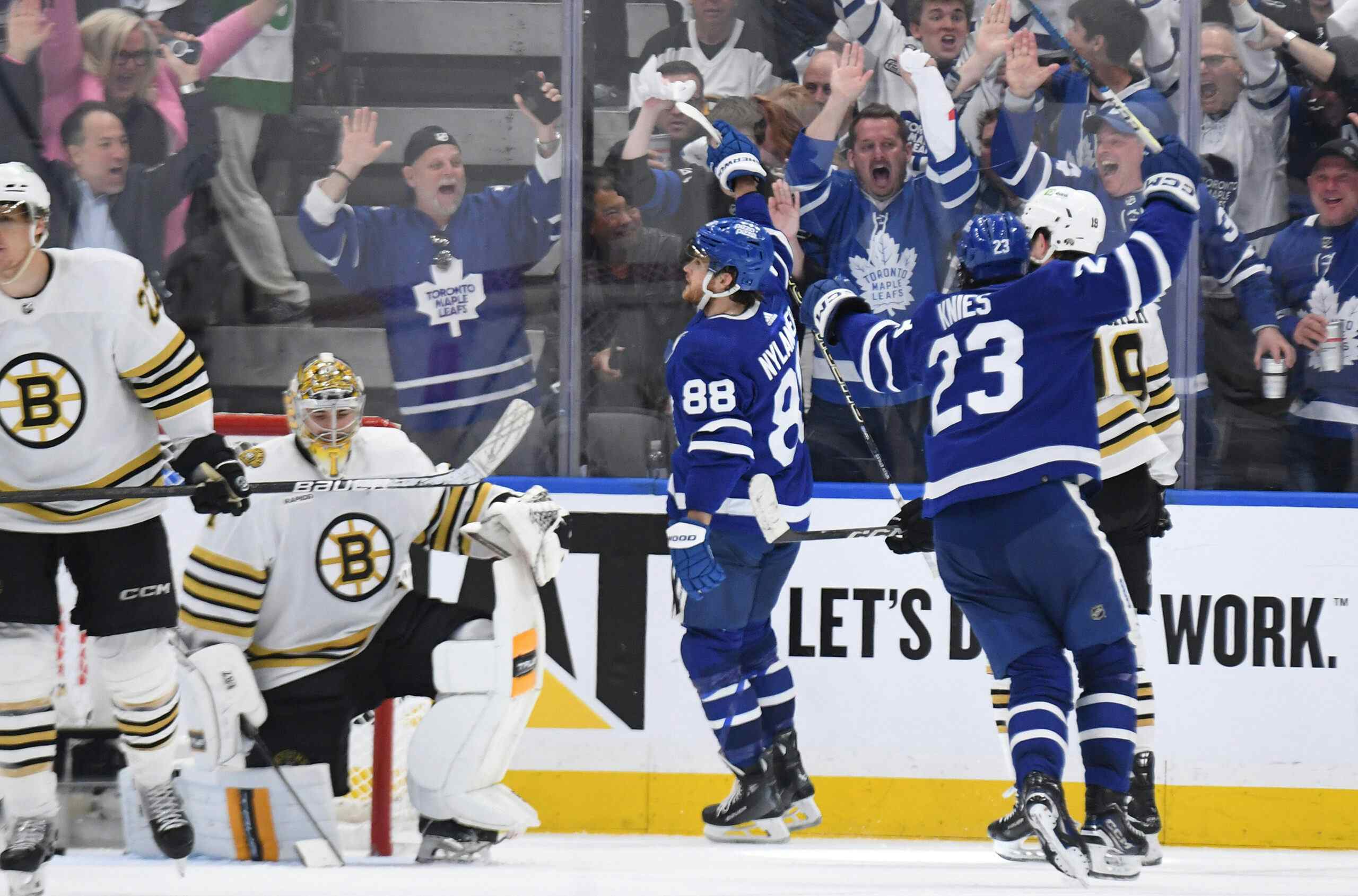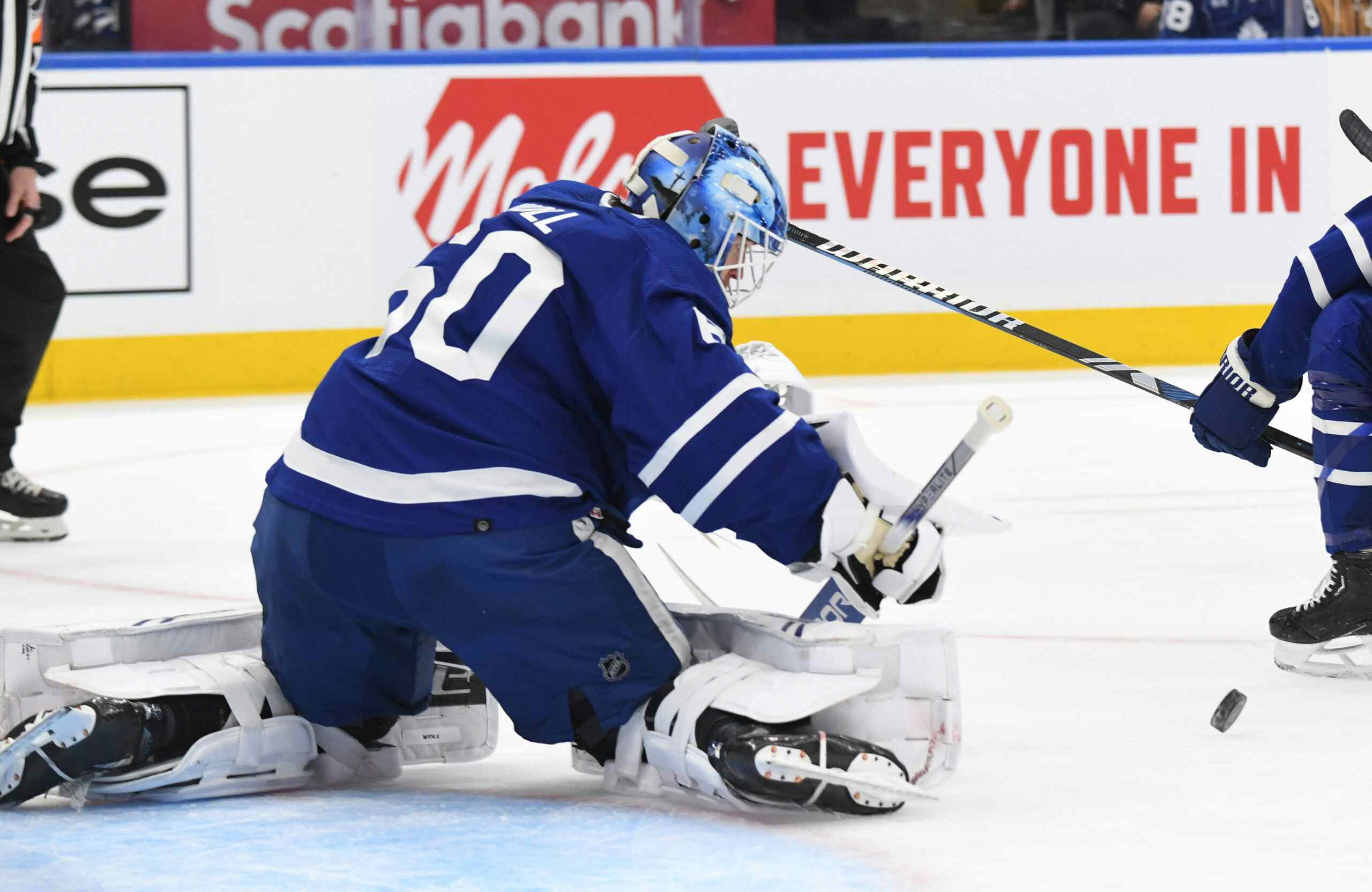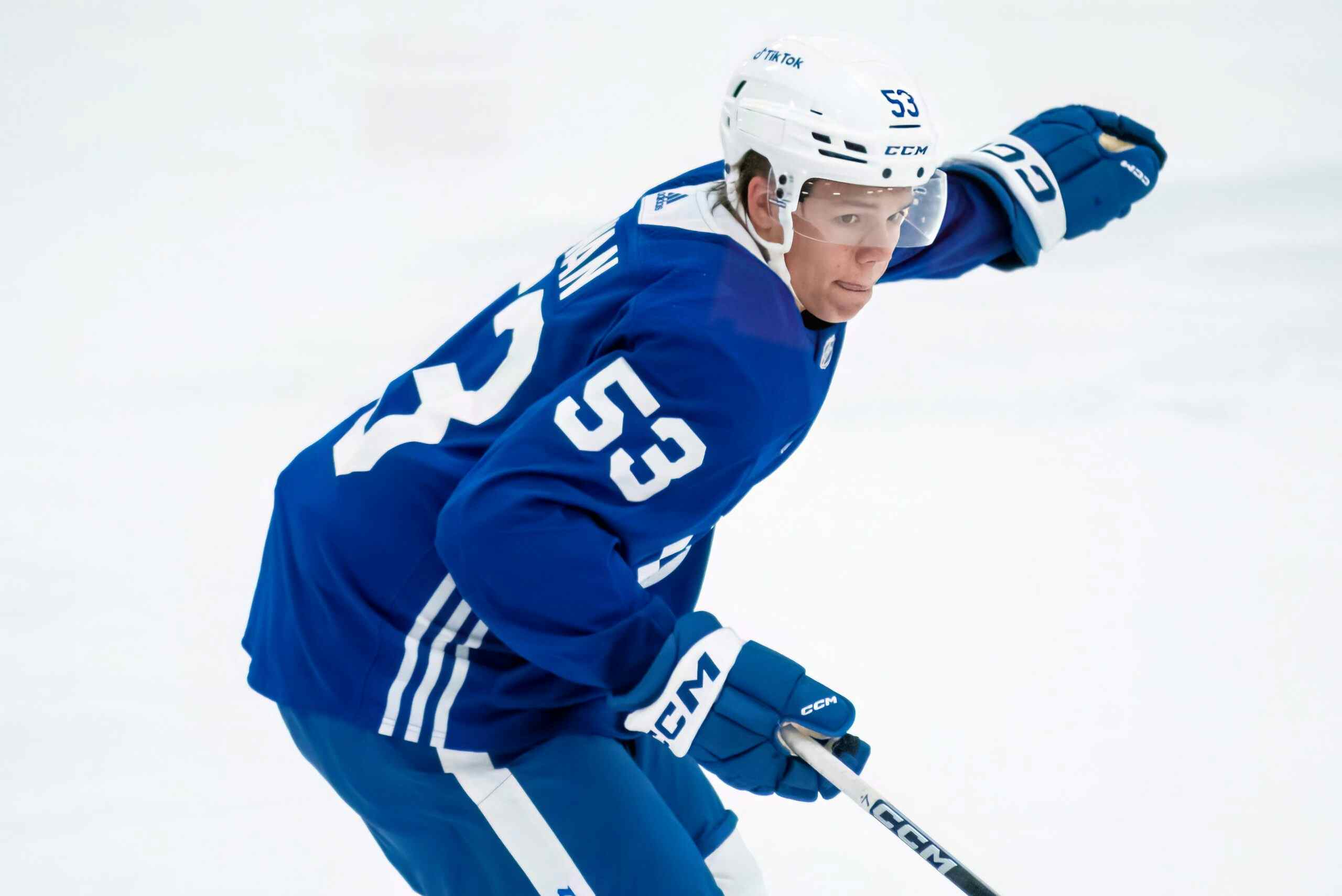This Year’s Model: Are This Year’s Leafs Mirroring Last Year’s Sabres?
By Greg Brady
7 years ago
Photo Credit: Kevin Hoffman/USA TODAY SPORTS
Last summer, I began to talk myself into the Buffalo Sabres, if not making the Eastern Conference playoffs, at least being in that conversation for a good chunk of the season. Yeah, yeah, 30th place team (two years in a row, actually), and if anything, their impending issues didn’t show enough in the 48-game shortened season of 2013, where they were a point-per-game team finishing with 48 points exactly.
Yes, a year ago at this time, I had talked myself into numerous “best-case” scenarios for the 2014-15 Sabres. A terrible team, to be sure, for years previous; having won 24 games in regulation time over the prior 164 NHL contests. But there were additions, and maybe more talent was added to the Sabres than this current offseason for the Maple Leafs. We’ll see if you agree by the time we’re done here.
The Sabres were getting the following:
- A #2 overall NHL-ready pick in Jack Eichel. Without the grind of a CHL season, playing fewer games in the NCAA, Eichel wowed many at the 2015 IIHF World Championships, not just with the puck but away from the puck, lining up against players like Evgeni Malkin. He was going to be at worst in his rookie season, very impressive, and at best, utterly transcendent.
- Ryan O’Reilly was a new Sabre, after the blockbuster June 26 trade with the Colorado Avalanche. More scoring and for years to come that the Sabres couldn’t count on in prior seasons.
- A Stanley Cup-winning head coach in Dan Bylsma. Bylsma was seen by many as having been the victim of a rather abrupt dismissal in the summer of 2014 after the Penguins were beaten in seven games in the second round by the eventual Eastern Conference champion New York Rangers. But Pittsburgh had struggled somewhat with Columbus in the opening round. Bylsma likely paid the price because the Pens lead the Blueshirts 3 games to 1 in the series, before utterly collapsing, and losing their next three games (Game 5 and 7 at home, no less) and being outscored 10-3 in the process. Fair or not, people get let go who are excellent at their jobs — and when they re-emerge, they come back highly motivated. Bylsma’s a great example of such.
- A full season of Sam Reinhart. How could this not be a good thing? Reinhart would turn 20 in early November of last season, and injury-free, though an obvious consolation prize to missing out on Aaron Ekblad in the prior year’s NHL Entry Draft, he’d add skill and exuberance to a lineup needing it badly the previous few seasons.
- A full season of Evander Kane. Yes, another Top 6 forward who should be entering, if not slightly there already, the prime of his NHL productivity. After the acrimonious trade with the Winnipeg Jets in late February 2015, Kane remained injured and had yet to make his Sabres debut. Exciting, right?!
- A full season of Zach Bogosian. I’ve always been a big Bogosian fan, though he’s probably a distant third among the “Big Three” defencemen drafted in the 2008 Draft. Bogosian, of all players, had potential to benefit from a change of scenery away from Winnipeg and had yet to play an NHL playoff game at age 25 going into last season.
- The addition of Jamie McGinn — sure, yes, why not? Though it’s not exactly known as the “McGinn” trade, the Sabres acquired a depth forward who had flirted with 20 goals a couple seasons prior in Denver (finishing with 19 in 2013-14) and brought the experience of three separate playoff runs with San Jose and Colorado combined. Let’s toss in veteran forward David Legwand, and former Leaf blueliner Cody Franson, and the veteran component, mixed with Brian Gionta and Josh Gorges was considerable on the Sabres.
- A new #1 goalie in Robin Lehner. Wait, shouldn’t that be more notable? Yes, except it’s ROBIN LEHNER. I felt instantly a wave of empathy for Sabres’ fans hoping for better in acquiring a starting goalie, especially in a summer when there was so much transition in the league amongst goalies. Never mind that I thought the 21st overall pick was far too high a price, when Ottawa, flush with goaltenders (Craig Anderson, Andrew Hammond, Matt O’Connor) was truly the team that needed to move Lehner, as opposed to Buffalo being the team that needed to acquire him. There was leverage to be utilized here, especially in an intra-division swap, and Ottawa suckered Buffalo, in my estimation.
The season prior, Lehner ranked 46th of 54 eligible goalies in 5v5 save percentage (750 minutes played minimum) with a mark of .908. The league average in 2014-15 was .925. He’s not even an average goalie, and using my eyes, as well as statistics (because you should), nothing’s changed that perception.
So all that said, what happened? Well, Lehner proved skeptics like me neither right nor wrong early in the season, given he suffered a high ankle sprain in his Sabres debut — a 3-1 defeat to, yes, exactly, Ottawa.
If anything, backup Chad Johnson impressed far more than anyone could have anticipated, having a much better statistical season (advanced and otherwise) for the Sabres than he had in pure backup duty with the Islanders.
The Sabres after a 2-6-0 start rallied and won six of their next eight, to find themselves with 16 points in 16 games heading into mid-November. Unfortunately, they hit a stretch, saddled by some injuries, and lost six straight (getting 2 of a possible 12 points), scoring only seven goals in the six contests. Two more three-game losing streaks in December pretty much cemented that the gap would be too considerable, the Sabres smartly sold assets at the Trade Deadline (Mike Weber and Jamie McGinn), and finished 14th in the 16-team East, ahead of only Columbus and Toronto.
Now, few deny that the Sabres have bright days ahead of them. The assets seem to be there, there haven’t been disastrous trades or draft picks in the post-Regier era, and they rarely have let a veteran player in a non-playoff season finish with the club. Instead, they sell that player off from a position of strength, generating multiple bids for players like Ryan Miller, Robyn Regehr, Jason Pominville, Matt Moulson, and Thomas Vanek a particular deal where they made hte Islanders look silly before they re-sold him months later.
But, last year’s Sabres impressed many — it’s not easy to ask a team for a 27-point improvement, regardless of how awful they were the season before, but going from 54 to 81 points looks good on paper — making the next jump becomes harder than that.
But there are massive questions for certain:
- What to do with Kane and his multiple off-ice alleged transgressions and accusations? Did the Sabres trade for a bad person, and will the welcome be worn out even faster than his Thrashers/Jets one was?
- Is O’Reilly capable of taking another step forward in a solid, young career and can he become an elite scorer? 70 points? 30 goals?
- Is there enough time and space for Reinhart to keep developing? If Eichel wasn’t on the Sabres, is there more hype about Reinhart? Is it already being forgotten, he had a very impressive 20-goal season as a 19-year old. It’s not talked enough about how difficult that is to pull off — especially on a developing team.
- Have we seen the best of Zach Bogosian already?
- And, yes, did the Sabres make a considerable over-estimation of Robin Lehner’s potential to be a #1 goalie in the NHL? A city privileged enough to watch 18 combined years of Dominik Hasek and Ryan Miller provide All-World netminding many of those seasons, can’t get snowed into seeing something that isn’t truly there.
I’m not sure the Leafs enter this season with the assets Buffalo did last year, though I do think getting 58-62 games from Freddie Andersen will give the Leafs as consistent goaltending as the Sabres got last season. My fear for the Sabres is Lehner this year won’t be nearly as good as Johnson was last year, on many nights.
Goal-scoring for the Leafs? Well, I might be too skeptical, but they’ll be tough to come by — and asking for a 40 goal increase like the Sabres had isn’t realistic (Buffalo went from 161 to 201 in goals scored and shaved their goals against from a horrific 274 in 14-15 to 222 last year). The Sabres were 16th in team goals-against at 2.62, ahead of all seven Canadian teams, none of whom were lower than the 2.84 Montreal posted (good enough, well, lousy enough for 21st of 30 teams).
There are more similarities than differences between the organizations. Both teams had considerable early-21st Century success. Lots of playoff round wins, and splendid goaltending, from Hasek and Miller in Buffalo, to Joseph and Belfour in Toronto. It’s actually surprising the teams only met the one time in the playoffs (the 1999 Eastern Conference Finals. But Buffalo needed a revamp after missing the playoffs three straight seasons, and after the lockout season, few teams were as well-built under the new salary cap rules, and as such, the Sabres surprised few in going to back-to-back Eastern Conference Finals.
Buffalo tore things down a couple of years ago in proper fashion. Does it guarantee success? Certainly not — for all the love the New York Islanders get, they just this past season won a playoff round since drafting John Tavares in 2009. For the Blackhawks and Penguins who bottom out and then become league powerhouses, we already know all about the Blue Jackets, Thrashers/Jets, and, obviously, Oilers teams that don’t ever come close.
Expecting a year similar to what Buffalo had last year is sensible for Maple Leafs’ supporters. 81 points? Adding a couple of 2nd or 3rd-round picks on Trade Deadline Day? Healthy and modestly productive seasons for Matthews, Nylander, and potentially, Marner? Drafting 8th overall and adding another part for the short-term future? Finding out the team and fanbase like Andersen enough that he’s the most entrenched starter the team has truly had since Ed Belfour’s second-last season? I think all of those things happening make for an incredibly positive season.
We know early-season Maple Leafs winning streaks will fan the flames of “playoff talk”. I get that, yes, and teams less-skilled, less well-coached, and spending less money on salary make the playoffs every single season in the NHL.
I like what Buffalo has done. They finally had enough of their mediocrity a few seasons ago and, approve or not, did something about it. Teams in Detroit and Boston haven’t had those revelations yet, and there’s a day not too far down the road when the Sabres and Leafs likely use their yearly collection of Red Wings and Bruins matchups for target practice.
But, like you, I reserve the right to change my mind. I think we already know Sabres fans should be demanding a team that gets more than 81 points and at least stays in playoff contention for longer. I believe that we’re exactly a year away from asking such in Toronto.
Recent articles from Greg Brady





